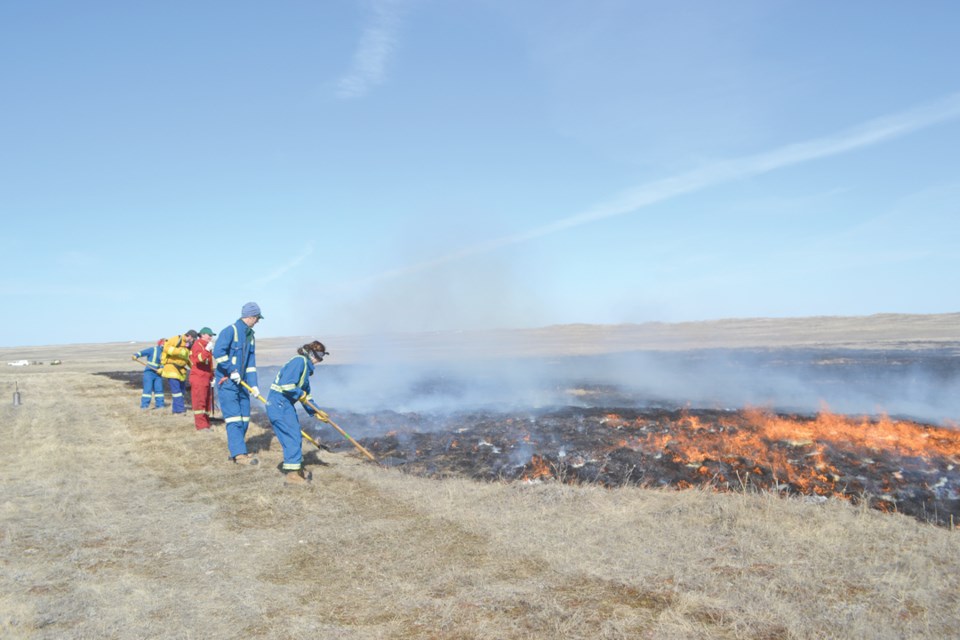The Nature Conservancy of Canada (NCC) and the University of Saskatchewan (U of S), are partnering to research management strategies which influence where cattle and bison graze.
The NCC and U of S, with significant contributions from Meewasin Valley Authority, has conducted the first in a series of prescribed burns for a research project taking place at the Old Man on His Back Prairie and Heritage Conservation Area (OMB).
The prescribed burns are part of a five-year research project to better understand how to influence where cattle and bison graze at OMB, and how fire, as a natural disturbance, changes the plant community.
Spring and fall burns are tentatively planned for the area over the next three years.
As part of the research, NCC and the U of S worked with local livestock producers, using GPS collars to track cattle and bison movements. The Meewasin Valley Authority, with a history of using prescribed burns for similar conservation goals, provided equipment and expert personnel to support the project. The Frontier Fire Department was also on hand participating in the burn.
“This research project with the U of S provides an excellent opportunity for NCC to work in partnership with multiple partners to implement the safe and effective use of prescribed fire in Saskatchewan. Prescribed fire, like grazing, is a tool for managing the disturbance-driven ecosystems of Saskatchewan,” said Matthew Braun, Manager of Conservation Science and Planning, Nature Conservancy of Canada, Saskatchewan Region
The small burn patches will help U of S researchers learn if the grass that grows back following a fire attracts animals to under-used parts of a pasture. Fire makes a quick reduction in the height of vegetation, and it changes the growing conditions for the plants. The regrowth of plants after a fire attracts grazing animals, which benefit from the higher protein content of the grass.
Unlike wildfires that generally happen when the weather is hot and dry and are made worse by wind, a prescribed burn is a fire set intentionally, under very strict weather and moisture conditions, to achieve specific results. There are many variables that influence whether or not a prescribed burn can occur, including humidity, temperature and wind speed. Prescribed burns will only be conducted when every one of the very specific conditions are met.
These prescribed burns create a mix of varied vegetation heights that result in a variety of habitats for grassland species while maintaining forage for grazing cattle and bison. Fire may also be used to reduce some of the invasive plants growing at OMB. This work is all part of ensuring that OMB continues to be a healthy home for the birds and animals that live there, as well as a working ranch that provides quality forage for ranchers partnering with NCC.
“This project was designed to encourage collaboration between agencies interested in addressing complex environmental issues. Fire suppression across the Canadian prairies over the last 100 years has decreased the variety of habitats available to native species, which have adapted to periodic disturbances by fire and grazing. I think this is a great opportunity for non-governmental organizations, academia and the agriculture industry to partner for enhanced stewardship of our precious grasslands for positive ecological and economic outcomes,” said Dale Gross, M.Sc., PhD candidate, University of Saskatchewan.




